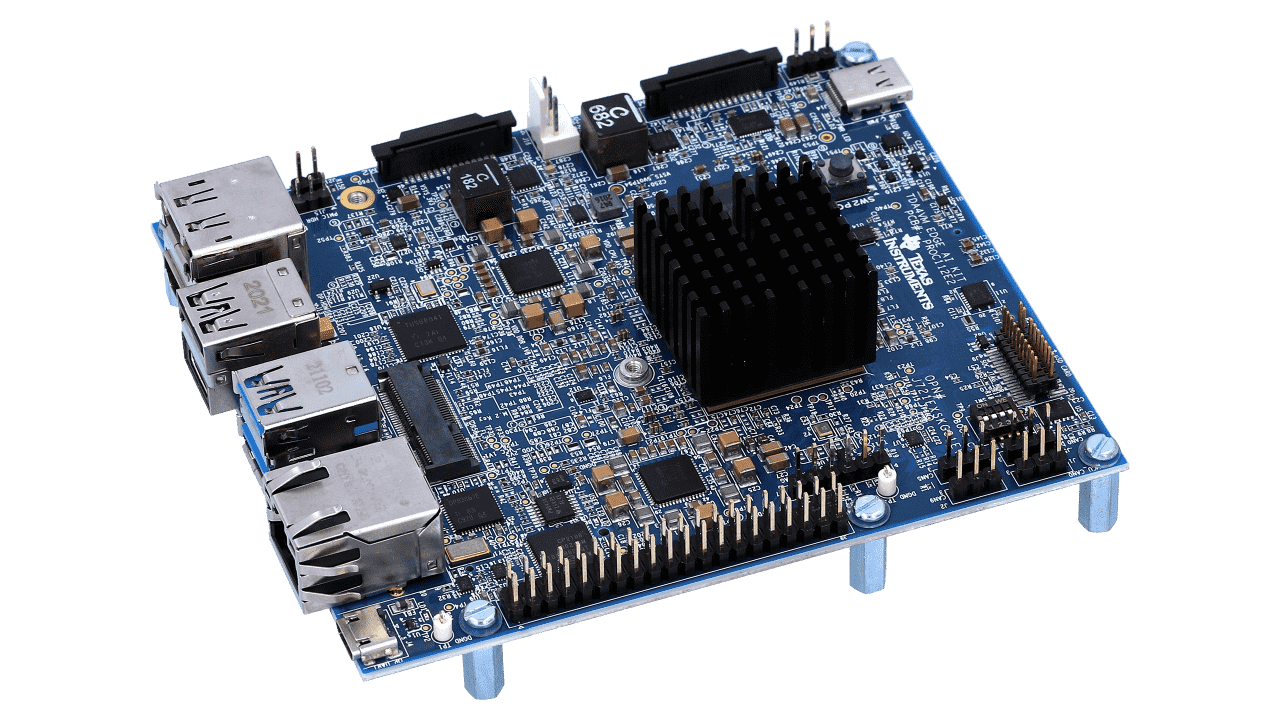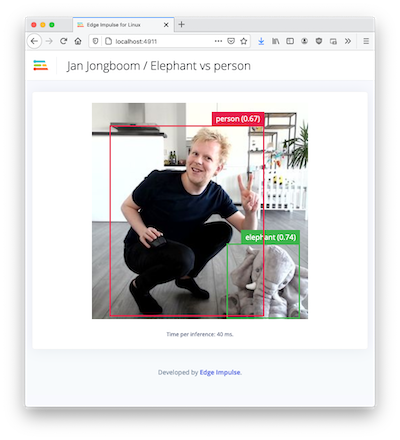
SK-TDA4VM
Installing dependencies
First, one needs to follow the TDA4VM User Guide found at the TDA4VM landing page to install the Linux distribution to the SD card of the device.Edge Impulse supports PSDK 8.06.
Connecting to Edge Impulse
With all software set up, connect your camera or microphone to your operating system (see ‘Next steps’ further on this page if you want to connect a different sensor), and run:--clean.
Verifying that your device is connected
That’s all! Your machine is now connected to Edge Impulse. To verify this, go to your Edge Impulse project, and click Devices. The device will be listed here.
Device connected to Edge Impulse
Next steps: building a machine learning model
With everything set up you can now build your first machine learning model with these tutorials:- Keyword spotting
- Sound recognition
- Image classification
- Object detection
- Object detection with centroids (FOMO)
Deploying back to device
To run your impulse locally run on your Linux platform:Image model?
If you have an image model then you can get a peek of what your device sees by being on the same network as your device, and finding the ‘Want to see a feed of the camera and live classification in your browser’ message in the console. Open the URL in a browser and both the camera feed and the classification are shown:
Live feed with classification results
Example projects
- Concrete Crackdown: AI is Making Sure Nothing Slips Through the Cracks
- Get Smart or Get Left Behind
- AI Joins the Loss Prevention Team
- Smart Factory with TI TDA4VM
- Edge Impulse Public Projects with tag “TDA4VM”